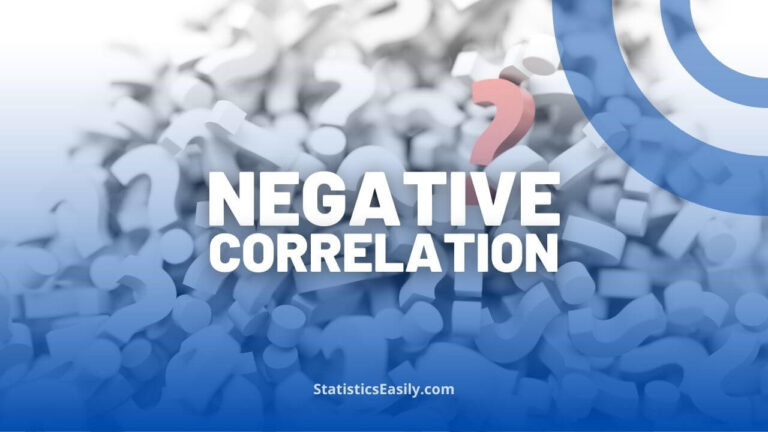P-hacking: A Hidden Threat to Reliable Data Analysis
P-hacking is a practice where researchers manipulate their data analysis or experiment design to make their results appear statistically significant, often leading to false-positive outcomes. This manipulation may involve multiple testing or changing hypotheses to match the data, undermining the research’s integrity.
An Overview of P-hacking
P-hacking, also known as data dredging or data snooping, is a controversial practice in statistics and data analysis that undermines the validity of research findings. It occurs when researchers consciously or unconsciously manipulate their data or statistical analyses until non-significant results become significant.
P-hacking refers to the manipulation of ‘p-values,’ a standard statistical measure that tests the hypothesis probability given the observed data. The critical threshold often lies at 0.05, below which results are statistically significant.
The issue with p-hacking is its disregard for the principles of hypothesis testing. This practice can lead to an inflated rate of Type I errors, where a true null hypothesis is incorrectly rejected.

Highlights
- P-hacking involves manipulating data or statistical analysis to produce false statistically significant results.
- P-hacking can inflate Type I errors, wrongly rejecting true null hypotheses.
- False positives from p-hacking can mislead data-driven decisions in critical areas like healthcare and economics.
- Considering effect sizes and confidence intervals, alongside p-values, can offer more context to findings and discourage p-hacking.
Ad Title
Ad description. Lorem ipsum dolor sit amet, consectetur adipiscing elit.
How P-hacking Undermines the Reliability of Data Analysis
When p-hacking is involved, data analysis loses its reliability. This is because p-hacking allows researchers to present a hypothesis as supported by data, even when the evidence is weak or non-existent.
In essence, p-hacking capitalizes on randomness, leading to the confirmation of false positives. It artificially lowers p-values, suggesting a statistical significance that doesn’t exist in the data. As a result, findings appear more robust and conclusive than they actually are.
P-hacking misrepresents the data and contaminates the body of research in a given field, leading to a crisis of replicability and credibility.
Types of P-hacking
P-hacking takes several forms. All of them, however, involve the misuse of statistical analysis to produce misleading, often false, statistically significant results. Understanding these types can help researchers and analysts avoid falling into their traps and maintain the integrity of their work.
The first form of p-hacking involves multiple testing, where researchers test a wide range of hypotheses on the same data set. Some of these tests will yield statistically significant results by chance alone, leading to false positives. Researchers can mitigate this form of p-hacking by applying Bonferroni correction or other adjustment methods for multiple comparisons.
A second form is optional stopping, where researchers prematurely stop data collection once they observe a significant p-value. This practice can inflate the type I error rate, leading to more false positives than expected under the null hypothesis. To avoid this, researchers should specify their sample size and stick to it.
Another form is cherry-picking, where researchers select and report only the most promising results from their analysis while disregarding the rest. This practice skews the perception of the data and the validity of the conclusions. Complete and transparent reporting of all tests conducted can help mitigate this issue.
The fourth type is hypothesizing after the results are known (HARKing). In this scenario, researchers formulate or tweak their hypotheses after examining their data, leading to a confirmation bias that inflates the chance of finding statistically significant results. To avoid HARKing, researchers should pre-register their studies, declaring their hypotheses and planned analyses before examining their data.
The final type is overfitting models. This occurs when researchers create an overly complex model that captures the noise, not just the signal, in the data. Although these models might fit their training data well, they typically perform poorly on new data, leading to ungeneralizable conclusions.
Consequences of P-hacking for Data-Driven Decision Making
In a world increasingly relying on data-driven decisions, the implications of p-hacking are profound. False positives can mislead policymakers, businesses, and other stakeholders who rely on research findings to inform their decisions.
For instance, in healthcare, p-hacked results could lead to the approval of ineffective treatments. In economics, it might promote harmful fiscal policies based on misrepresented relationships.
The abuse of p-values through p-hacking erodes confidence in data-driven decision-making and can lead to harmful real-world consequences.
Case Studies of P-hacking in Scientific Research
P-hacking has influenced the outcome of several well-known scientific research studies, calling into question the validity of their findings. This dubious practice highlights the need for more rigorous standards in data analysis.
The first case relates to the psychological concept known as the “priming effect.” A prominent psychology study by Daryl Bem in 2011 claimed evidence for precognition, where participants’ responses were seemingly influenced by future events. Bem’s methodology, though, was criticized for potential p-hacking, as he conducted multiple analyses and only reported those with significant results. Subsequent replication efforts failed to reproduce the same outcomes, suggesting p-hacking played a substantial role in the initial findings.
Another instance that rings the p-hacking alarm bell is the infamous “Mozart Effect.” A study proposed that children could enhance their intelligence by listening to Mozart’s music. The initial findings sparked a media frenzy and even influenced educational policies. However, the study’s results were later criticized as a possible product of p-hacking. Follow-up research struggled to replicate the effect, pointing out no substantial difference in the spatial reasoning abilities of children who listened to Mozart compared to silence or relaxation instructions. This incident reveals how p-hacked results can distort public understanding and prompt unsupported decisions.
These case studies emphasize the need to acknowledge and prevent p-hacking in scientific research. Without meticulous standards and ethical statistical practices, p-hacking risks compromising the trustworthiness and integrity of scientific discoveries.
Ways to Detect and Mitigate P-hacking
The battle against p-hacking begins with education and awareness. Researchers and analysts should know the ethical implications and potential damage p-hacking can inflict on scientific research. Understanding the misuse of p-values and data dredging perils should be integral to statistical literacy.
Transparent reporting of research methodologies and findings is a powerful tool against p-hacking. This involves full disclosure of all analyses conducted during the research, not just those yielding statistically significant results. By sharing this level of detail, any instances of p-hacking become easier to spot by other scientists and statisticians.
One highly effective method of promoting transparency is the pre-registration of studies. Pre-registration involves researchers publicly declaring their planned hypotheses and analyses before they begin examining their data. This commitment helps deter the temptation to tweak hypotheses or analyses to chase significant p-values. It also allows independent observers to differentiate between exploratory and confirmatory research.
Beyond focusing on p-values, researchers should also consider effect sizes and confidence intervals in their analyses. These measures provide more information about the practical significance of the findings. The effect size, for example, can indicate the magnitude of the difference or relationship observed, adding context to the statistical significance suggested by the p-value.
Moreover, robust statistical methods can help control the risk of false positives often associated with p-hacking. Techniques such as Bayesian methods or adjustment procedures for multiple comparisons can reduce the likelihood of incorrectly rejecting the null hypothesis.
In addition, fostering an academic culture that values methodological rigor over the allure of statistically significant results can also help reduce the prevalence of p-hacking. This involves changing the incentives in research publishing, encouraging replication studies, and rewarding transparency and openness in scientific research.
Ad Title
Ad description. Lorem ipsum dolor sit amet, consectetur adipiscing elit.
Concluding Remarks
While p-hacking poses a significant threat to reliable data analysis and the credibility of scientific research, we have various tools and strategies at our disposal to detect, deter, and mitigate its occurrence. Implementing these practices can help produce more reliable, trustworthy, and high-quality scientific research and data-driven decision-making.
Recommended Articles
Explore more about the intriguing world of data analysis and statistics by reading other relevant articles on our blog. Delve deeper into topics that matter to you and stay informed.
- Unraveling Sampling Bias
- The Role of Cherry Picking in Statistical Analysis
- Accuracy, Precision, Recall, or F1: Which Metric Prevails?
- Music, Tea, and P-Values: A Tale of Impossible Results and P-Hacking
- How Statistical Fallacies Influenced the Perception of the Mozart Effect
- When The P-Value is Less Than 0.05: Understanding Statistical Significance
Frequently Asked Questions (FAQs)
P-hacking is a practice in which researchers manipulate their data analysis or experiment design to make their results appear statistically significant, often leading to false-positive outcomes.
P-hacking undermines the reliability of data analysis by capitalizing on randomness, leading to false positives and suggesting statistical significance that doesn’t exist in the data.
P-hacking can mislead policymakers, businesses, and other stakeholders, leading to potentially harmful decisions in sectors such as healthcare and economics.
One case involves the “Mozart Effect,” where initial p-hacked results suggesting that Mozart’s music increases children’s intelligence could not be replicated in subsequent studies.
P-hacking can be detected through transparent research reporting, including full disclosure of all analyses conducted during research and through pre-registration of studies.
Implementing robust statistical methods, considering effect sizes and confidence intervals, and fostering an academic culture that values methodological rigor can help mitigate p-hacking.
Effect size can indicate the magnitude of the difference or relationship observed, adding context to the statistical significance suggested by the p-value, thus discouraging p-hacking.
Data dredging, another term for p-hacking, refers to the misuse of data analysis to find patterns in data that can be presented as statistically significant, even when not.
P-hacking compromises the integrity of scientific research, leading to false positives, misleading findings, and potentially erroneous decisions based on those findings.
Bayesian methods offer a more comprehensive approach to data analysis by incorporating prior knowledge, reducing the risk of false positives, and thus helping prevent p-hacking.








